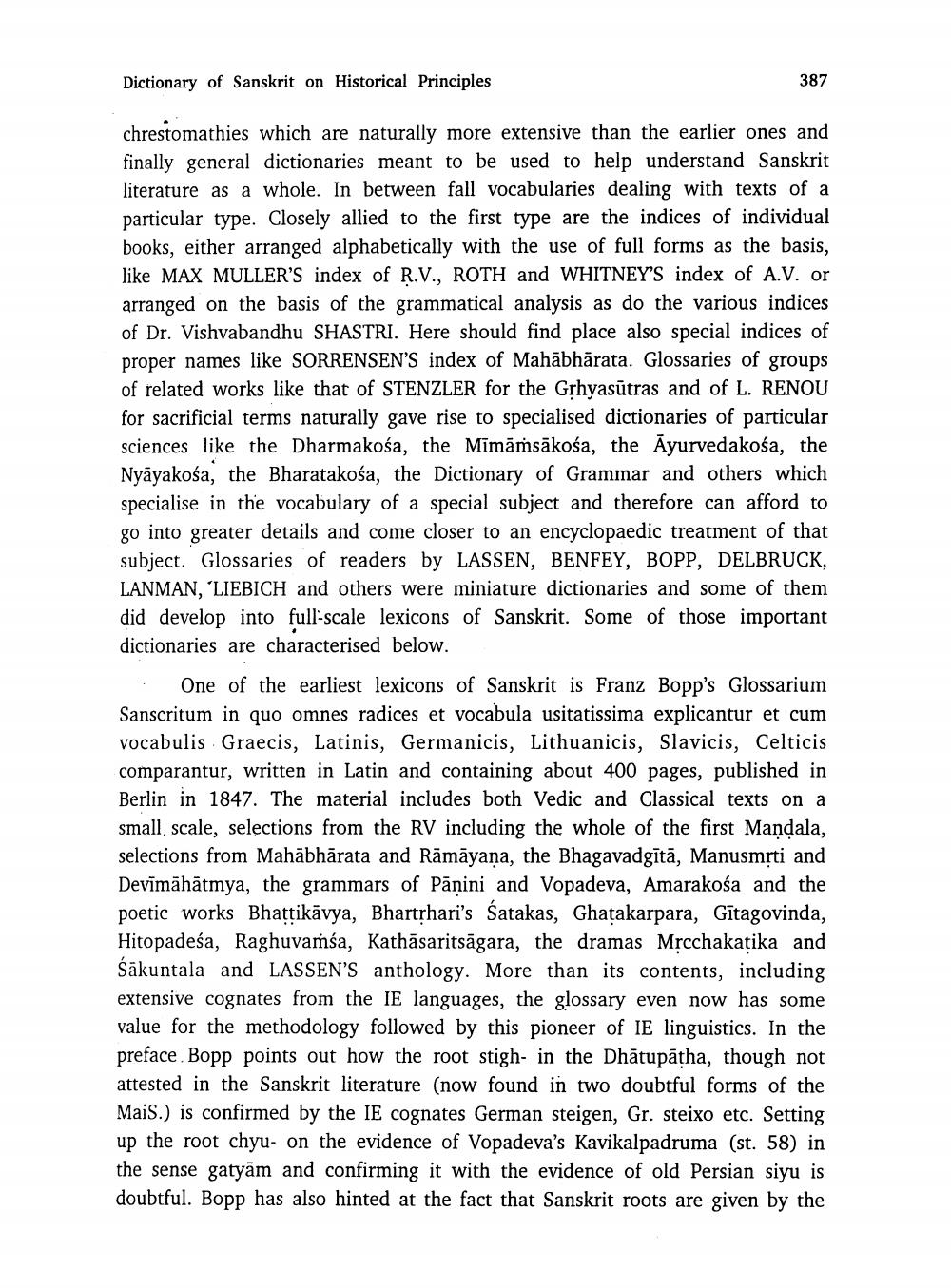________________
Dictionary of Sanskrit on Historical Principles
387
chrestomathies which are naturally more extensive than the earlier ones and finally general dictionaries meant to be used to help understand Sanskrit literature as a whole. In between fall vocabularies dealing with texts of a particular type. Closely allied to the first type are the indices of individual books, either arranged alphabetically with the use of full forms as the basis, like MAX MULLER'S index of R.V., ROTH and WHITNEY'S index of A.V. or arranged on the basis of the grammatical analysis as do the various indices of Dr. Vishvabandhu SHASTRI. Here should find place also special indices of proper names like SORRENSEN'S index of Mahābhārata. Glossaries of groups of related works like that of STENZLER for the Grhyasūtras and of L. RENOU for sacrificial terms naturally gave rise to specialised dictionaries of particular sciences like the Dharmakośa, the Mīmāṁsākośa, the Ayurvedakośa, the Nyāyakośa, the Bharatakośa, the Dictionary of Grammar and others which specialise in the vocabulary of a special subject and therefore can afford to go into greater details and come closer to an encyclopaedic treatment of that subject. Glossaries of readers by LASSEN, BENFEY, BOPP, DELBRUCK, LANMAN, 'LIEBICH and others were miniature dictionaries and some of them did develop into full-scale lexicons of Sanskrit. Some of those important dictionaries are characterised below.
One of the earliest lexicons of Sanskrit is Franz Bopp's Glossarium Sanscritum in quo omnes radices et vocabula usitatissima explicantur et cum vocabulis Graecis, Latinis, Germanicis, Lithuanicis, Slavicis, Celticis comparantur, written in Latin and containing about 400 pages, published in Berlin in 1847. The material includes both Vedic and Classical texts on a small scale, selections from the RV including the whole of the first Mandala, selections from Mahābhārata and Rāmāyana, the Bhagavadgītā, Manusmrti and Devīmāhātmya, the grammars of Pānini and Vopadeva, Amarakośa and the poetic works Bhattikāvya, Bharthari's Satakas, Ghatakarpara, Gītagovinda, Hitopadeśa, Raghuvamsa, Kathāsaritsāgara, the dramas Mrcchakatika and Sakuntala and LASSEN'S anthology. More than its contents, including extensive cognates from the IE languages, the glossary even now has some value for the methodology followed by this pioneer of IE linguistics. In the preface Bopp points out how the root stigh- in the Dhātupātha, though not attested in the Sanskrit literature (now found in two doubtful forms of the Mais.) is confirmed by the IE cognates German steigen, Gr. steixo etc. Setting up the root chyu- on the evidence of Vopadeva's Kavikalpadruma (st. 58) in the sense gatyām and confirming it with the evidence of old Persian siyu is doubtful. Bopp has also hinted at the fact that Sanskrit roots are given by the




